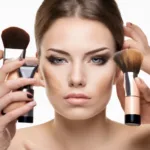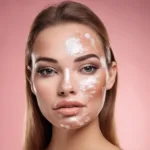20 January 2024
A comprehensive analysis of the beauty and wellness industries in the year ahead
As we embark on a new year, the beauty and wellness industries are poised for significant developments. From high-profile mergers and acquisitions to the struggles faced by celebrity and influencer brands, the landscape of beauty is constantly evolving. In this article, we will explore the key trends, challenges, and opportunities that await the business of beauty in 2024.
1: Beauty M&A: A Blockbuster Year Ahead
2024 is set to be a year of blockbuster beauty mergers and acquisitions. Already, we have witnessed the acquisition of skincare label Dr. Barbara Sturm by Puig and the feminine wellness line The Honey Pot by Compass Diversified. Additionally, giants like Unilever and Shiseido acquired K18 and Dr. Dennis Gross respectively. This flurry of activity indicates that brands are eager to secure superior valuations and strategic buyers. Notably, smaller brands such as Kiko Milano, Tree Hut, Pixi, and Erno Laszlo are also expected to enter the market. The success of recent acquisitions has sparked hope among brands of all sizes, driving them to seek their due.
2: The Changing Face of Buyers
While the number of brands entering the market continues to grow, the question remains: who is buying all these brands? Major conglomerates like L’Oréal and Unilever have been divesting from certain labels to align with stricter company mandates. Conglomerates now seek “forever brands” rather than jumping on trends like “clean” or “natural.” As a result, financial sponsors and unexpected buyers are expected to play a significant role in 2024’s deals. However, not all brands will find the desired buyer, and the search for the perfect match may prove challenging.
3: The Struggles of Celebrity and Influencer Brands
Following the success of Rihanna’s Fenty Beauty and Selena Gomez’s Rare Beauty, many celebrities and influencers have ventured into the beauty and wellness space. However, the market has not been kind to these brands, as demonstrated by the struggles faced by Morphe and Amyris in the past year. Retailers are likely to rely less on celebrity and influencer lines, leading talent to explore other pet projects outside of beauty.
4: The Challenges for Independent Labels
The rapid success of brands like Drunk Elephant, Tatcha, and Glossier in the mid-2010s inspired a wave of new beauty labels. Each brand sought to differentiate itself with unique selling points such as “clean,” “sexual wellness,” or “patented ingredients.” However, securing capital has become more difficult, and fast growth without profitability is no longer enough to entice investors or retailers. The industry is due for a rightsizing, as not all brands can thrive in an oversaturated market.
5: A Clearer Definition of Wellness
The wellness industry, once defined by supplements and CBD products, is undergoing a transformation. Themes like longevity are set to impact skincare and healthcare, opening up opportunities for brands and retailers. Holistic treatments, sleep advancements, and wellness-centric stores are just a few examples of the innovation that could shape the wellness landscape in 2024.
Conclusion:
As we navigate the year ahead, the business of beauty faces both challenges and opportunities. The beauty M&A market is booming, but the buyer landscape is shifting. Celebrity and influencer brands may struggle, while independent labels must navigate a competitive market. However, the evolving definition of wellness offers room for innovation and growth. The beauty industry is poised for an exciting and transformative year, and we will be following these developments closely. Stay tuned for more insights and analysis from The Business of Beauty.



